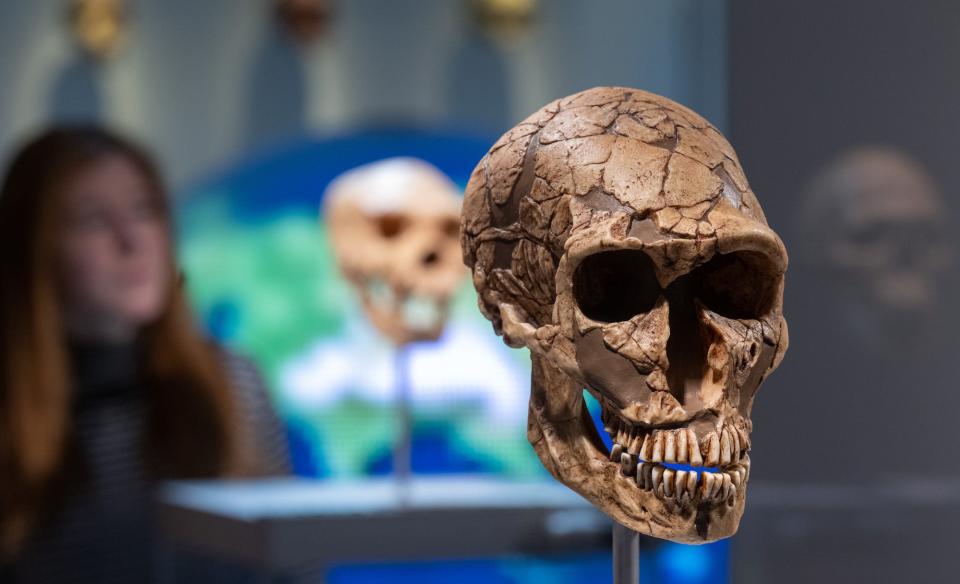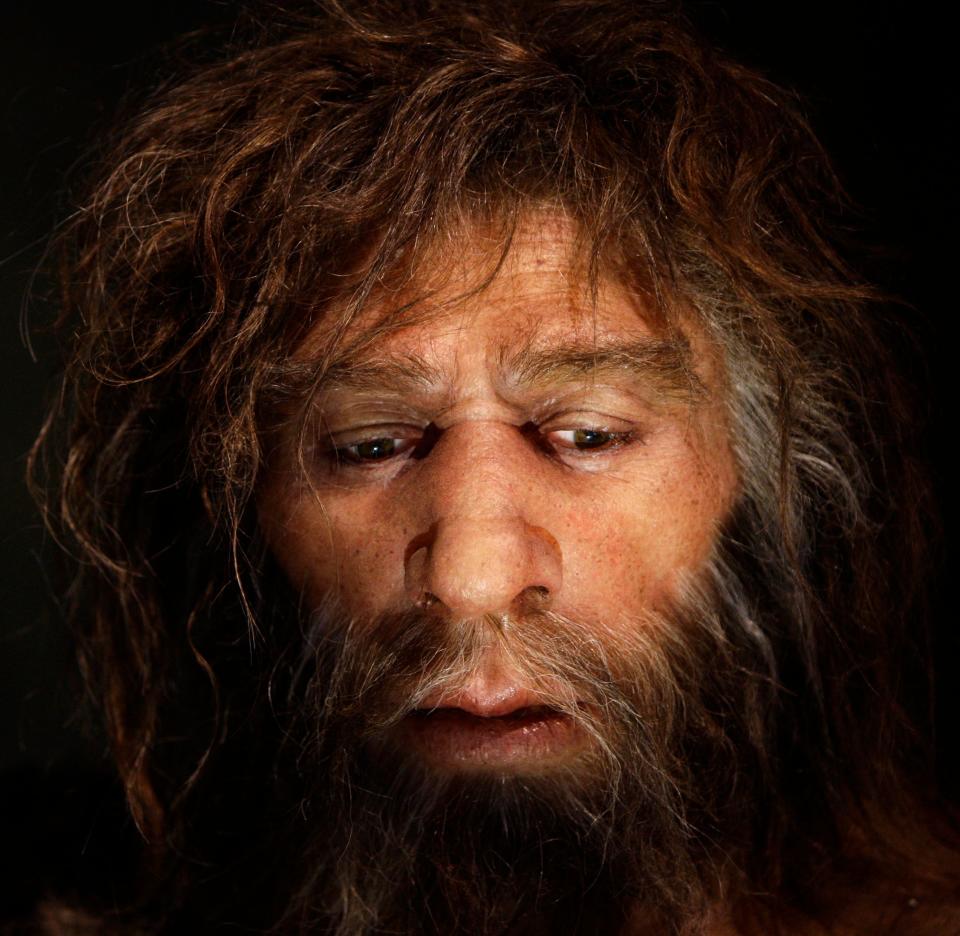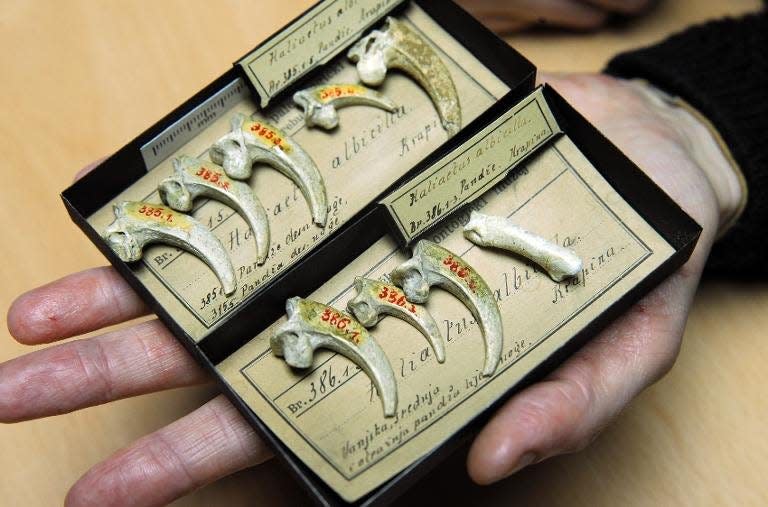-
Until recently, there was consensus that Neanderthals and Homo sapiens were separate species.
-
But most people carry around 2% of Neanderthal DNA, challenging the notion that we are different.
-
Other research suggests that Neanderthals were not inferior to Homo sapiens and should be considered humans.
Neanderthals have long been portrayed as foolish, savage beasts who were genetically inferior to our direct ancestors, early modern humans.
These ape-like creatures grunted their speech, were beset by disease, and went extinct after losing the evolutionary battle against Homo sapiens 40,000 years ago.
Or at least that’s what we’re told. But recent discoveries are overturning this view and reigniting debate among scientists about whether Neanderthals should be considered the same species as early modern humans.
If Neanderthals belonged to our species, it could reshape the history of human evolution and challenge how we define what makes us human.
Most of us have some Neanderthal DNA
The first fossils of Neanderthals were identified approximately 200 years ago. You would think that by now scientists would have decided whether to define them as a separate species from Homo sapiens.
But it turns out to be a matter of fierce debate, paleontologist Antoine Balzeau of the Museum National d’Histoire Naturelle in France told Business Insider.
“When we first discussed fossils in the 19th century, there was no real discussion about specific species, because at that time humans were seen as a species, but by default,” he said.


As more fossils emerged, scientists began to question the exact distinction between species.
Until recently, however, it was mostly agreed that Neanderthals should be viewed separately. Homonins that roamed Europe about 430,000 years ago interacted only briefly with Homo sapiens, which reached Europe from Africa about 50,000 years ago.
The lineages diverged about 500,000 years ago; relatively recently in the story of human evolution, but long enough ago to appear significantly different. For many, this evidence was enough to settle the debate: Neanderthals and Homo sapiens were separate species.
This view began to change in 2008, when Swedish geneticist Svante Pääbo accomplished something thought impossible: He sequenced a Neanderthal genome by extracting DNA from ancient bones.
Through his research, Pääbo was able to show that there is a little Neanderthal in most of us. In fact, he showed that most living people carry it with them. 2% of Neanderthal DNA.
Evidence also suggests that human ancestors and Neanderthals likely had children together when they lived together about 50,000 years ago.
This news created a dogmatic crack and once again revealed the possibility of Neanderthals and humans being considered the same species.
After all, according to the strict biological definition of species, animals of different species should not be able to produce fertile offspring.
“This was definitely a huge game changer,” evolutionary anthropologist Laura Buck, who studies hybridization between hominin species, told BI.
“I think this brings this debate back to the forefront,” he said.
Were Neanderthals more than our distant cousins?
The idea that species cannot reproduce is “intuitively appealing because it’s kind of a given,” Buck said. “But the biology doesn’t cut clear.”
He points out several examples of mammals known to interbreed and have fertile offspring, such as wolves and dogs, despite being clearly defined as separate species.
In his view, a better definition of Neanderthals that is most scientifically tried and tested is the first: The features of their bones distinguish them from modern humans and their direct ancestors.


“I know there are various different papers out there that say if you shaved a Neanderthal, put him in a suit, and put him on the subway or the subway in New York, no one would notice, I don’t think that’s true,” he said. .
“I think we would definitely think they looked a little weird,” he said.
Balzeau agrees. “There may be some debate among experts about how we define the different groups, but from a paleontological perspective Homo neanderthalensis and almost Homo sapiens are very clear anatomical differences,” Balzeau said.
But for others, genome information should be another argument to free the Neanderthal from the compelling stereotype.
It’s the same for Paul Pettitt, an archaeologist specializing in the Palaeolithic at Durham University in the UK.
“To use this evolutionary difference to assume that different species exist would be guessing,” he told BI.
Can culture define a species?
Over the past two decades, excavations have begun to emerge showing that Neanderthals may have been much more complex than previously thought.
Pettitt counts himself among those who until recently were skeptical that Neanderthals had any sense of sophistication.
“Until, say, 20 years ago, the behavior of Neanderthals was seen as quite stupid, or at least quite limited, and Homo sapiens, by contrast, were seen quoting Shakespeare while dancing in Europe,” he joked.
“This is nonsense, of course, but it is a very deep-rooted view,” he said.


Pettitt said that based on their size, some studies suggest that Neanderthals had a brain that was at least the same size, if not larger, than our ancestors, indicating they may have been very cerebral.
“You don’t buy a top-of-the-line computer just to use it as an alarm clock. There must be an evolutionary reason why Neanderthals chose this metabolically expensive tissue,” he said.
Research has suggested that Neanderthals were skilled hunters and leather workers, produced primitive jewelry, had a complex lithic industry, and even worked with pigments.
Some scientists even believe they may have had some form of spirituality, buried their dead, revered lions, and may even have painted cave paintings; but this evidence is still a matter of debate.
According to Pettitt, this suggests that since Neanderthals and humans lived side by side in Europe, there’s a good chance they shared a culture or learned from observing each other.
If they do, “we can assume that they probably speak different languages. But this similarity suggests that there is actually a common meaning, no matter how simple.”
Can Neanderthals be called humans?
There’s a bigger picture question at stake here: Should Neanderthals be considered humans?
“What humanity is depends largely on which group of people you talk to,” Buck said.
“It’s something that’s culturally defined, but it’s also something that involves value judgments. We’re talking about inhumanity. We’ve talked about humanity. It’s not just something that refers to different types of organisms,” he said.
Considering the large number of people alive today, it can be argued that there is more Neanderthal DNA on Earth than there was before.
Angela Saini, author of “Superior: The Return of Racial Science,” argues that there is a real risk of this being misunderstood. Those thought to have more Neanderthal DNA today may be mistakenly considered inferior.
Early studies linked these Neanderthal genes to modern health effects such as autoimmune diseases, diabetes, and some cancers; But exactly how these genes affect the health of the person carrying them is still mostly unclear. Neanderthal genes have also been specifically linked to contracting Covid-19.
Since East Asian populations have been found to carry slightly more Neanderthal DNA on average, there is a real danger that this information could be used for discriminatory purposes.
On the other hand, our interpretation of Neanderthal culture has changed dramatically in recent years. Saini notes that the image of Neanderthals was repaired as humans began to bring them closer to European populations, and genetic information began to suggest they had lighter skin and red hair.
“This is something I find particularly frustrating. About a hundred years ago, the supposed similarity between Neanderthals and Australian Aboriginals was used as a justification to pull living modern humans out of the circle of humanity,” he told WNYC.
“Now, as we see that Neanderthals had some contact with modern-day Europeans, Neanderthals, an extinct species, have also been thrown into this human circle.”
We are rewriting our history
We are still in the process of understanding Neanderthals and our relationship with them. As we begin to examine the history of human and Neanderthal evolution, scientists’ decision to separate the two and portray one as superior is coming under new scrutiny.
As he explained his research, Pääbo reflected on how exceptional the humans living on Earth today are; this was not because Homo sapiens was inherently better, but because there were very few times in the history of human evolution when Homo sapiens was the only hominin or hominin. human on the planet.
“How would we cope today if Neanderthals and Denisovans had survived?” said Pääbo.
“Would we have worse racism towards them than we have among us today because they are really different in some ways, or could we think differently and say that if they were here today, there wouldn’t be one type of person?” added.
“I think both things are possible, and that reflects the way we look at people and how we speculate about it.”
Read the original article on Business Insider